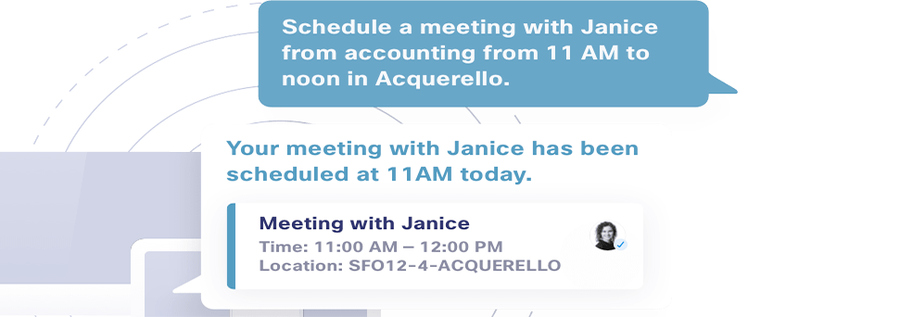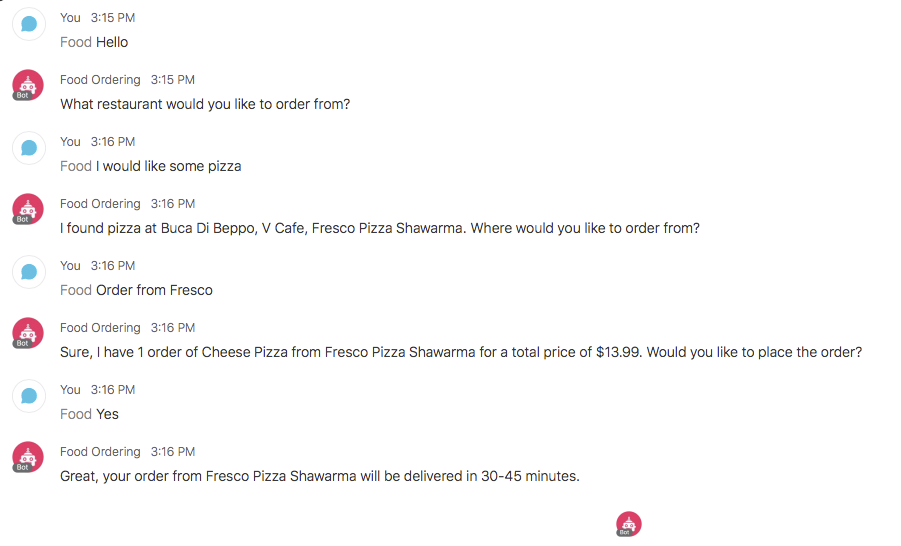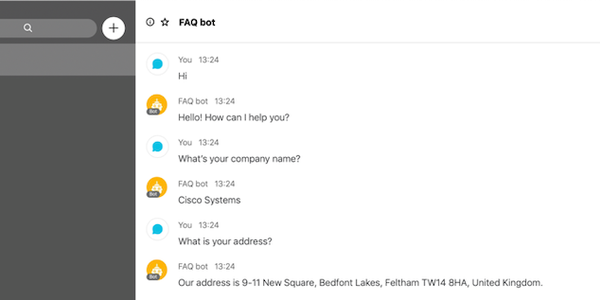(Re)Introducing MindMeld: Webex's Open Source Conversational AI Platform
May 10, 2019

MindMeld is the conversational AI platform that powers Webex Assistant and Cisco's web site search. This week, we released it as an open source framework for anyone building state-of-the-art conversational applications. The platform is easy-to-use for beginners learning to build conversational assistants, and flexible and powerful enough for advanced use by machine learning experts—making it an impressive alternative to existing solutions.
anchorWhat is MindMeld?
anchorMindMeld is a full stack conversational AI platform that allows developers to build domain-specific conversational applications. It’s a python-based framework that leverages advanced machine learning (ML) algorithms from libraries like Scikit-learn and TensorFlow to understand human language and a sophisticated information retrieval-based engine to provide domain expertise to the client.
There are several key differences between MindMeld and other cloud AI platforms like DialogFlow and Lex:
- MindMeld provides APIs that build state-of-the-art ML models for language understanding. These models are highly configurable based on the customer's application.
- Customers don't need to upload data to a cloud environment. The platform runs on the device, so the customer owns their own data.
- It natively integrates with a knowledge base built into its platform on-device, enabling the development of compelling domain-specific conversational applications.
- It provides a sophisticated dialogue state management system that intuitively handles context switches in multi-turn conversations.
- It provides the ability to recover from automatic speech recognition transcription errors by isolating and resolving entities from multiple transcript hypothesis in a phonetically accurate manner.
- It supports intelligent entity grouping similar to semantic parsers.
MindMeld also has key differences to other open-source AI platforms like RASA, especially since the platform natively supports textual/voice-based entity resolution and knowledge-base management, which are components not packaged in other open source platforms.
The MindMeld platform architecture contains four main components:
- The natural language processor contains all the classifiers and resolvers to understand human language
- A knowledge base containing all the domain-specific objects for a particular application
- A dialogue manager that handles dialogue flows
- The application manager, which interfaces input/output with various external services.
 Architecture of the MindMeld platform
Architecture of the MindMeld platform
anchorWho uses MindMeld?
anchorMindMeld is the technology behind Webex Assistant, a voice assistant that enables collaboration across Webex Board and Room Kit devices. In addition to Webex Assistant, MindMeld also supports language understanding components of Cisco.com search (with more than a million search queries a month) and its affiliated intranet search sites. Cisco partners and external developers are using MindMeld to build successful deep-domain conversational AI agents.
We built MindMeld for data scientists, ML practitioners and software developers who need to build and own the entire conversational AI stack, from the ML models that understand human language to the information retrieval engine needed to resolve entities to their canonical form.
We often see developers transition to the MindMeld platform after trying DialogFlow's narrow vocabulary intents and more basic chat capabilities. MindMeld provides greater configurability, allowing for classifiers that are tailor-made for the specific application. The knowledge base gives developers greater control of the quality of relevant business objects returned to the user.
anchorWhere can I learn more?
anchorVisit MindMeld.com to learn more and start building your own conversational application. To help you get started, example applications are available with all the necessary machine learning training data, dialogue state handlers, and knowledge based retrieval logic. You can also learn how to integrate a MindMeld bot with Webex.
 An interaction with the food-ordering bot on Webex
An interaction with the food-ordering bot on Webex
